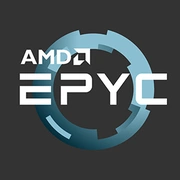AMD EPYC 8124PN

The AMD EPYC 8124PN processor is a powerful and efficient CPU designed for server platforms. With a total of 16 cores and 32 threads, this processor can handle demanding workloads with ease, making it an ideal choice for data center and enterprise applications.
One of the standout features of the EPYC 8124PN is its large 64MB L3 cache, which allows for fast access to frequently used data, resulting in improved overall performance. Additionally, with a thermal design power (TDP) of 100W, this processor strikes a good balance between power efficiency and high performance, making it a cost-effective option for businesses looking to optimize their server infrastructure.
The EPYC 8124PN is also well-suited for virtualization and cloud computing, thanks to its robust multi-threading capabilities. This allows for seamless multitasking and efficient resource allocation, ultimately leading to improved productivity and reduced operational costs.
Overall, the AMD EPYC 8124PN processor delivers impressive performance, energy efficiency, and scalability, making it a solid choice for businesses in need of a reliable and high-performing server CPU.
Basic
Label Name
AMD
Platform
Server
Launch Date
September 2023
Code Name
Siena
CPU Specifications
Total Cores
?
Cores is a hardware term that describes the number of independent central processing units in a single computing component (die or chip).
16
Total Threads
?
Where applicable, Intel® Hyper-Threading Technology is only available on Performance-cores.
32
Basic Frequency
2.0GHz
Max Turbo Frequency
?
Max Turbo Frequency is the maximum single-core frequency at which the processor is capable of operating using Intel® Turbo Boost Technology and, if present, Intel® Turbo Boost Max Technology 3.0 and Intel® Thermal Velocity Boost. Frequency is typically measured in gigahertz (GHz), or billion cycles per second.
Up to 3.0GHz
L3 Cache
64MB
CPU Socket
?
The socket is the component that provides the mechanical and electrical connections between the processor and motherboard.
SP6
Technology
?
Lithography refers to the semiconductor technology used to manufacture an integrated circuit, and is reported in nanometer (nm), indicative of the size of features built on the semiconductor.
5 nm
TDP
100W
PCI Express Version
?
PCI Express Revision is the supported version of the PCI Express standard. Peripheral Component Interconnect Express (or PCIe) is a high-speed serial computer expansion bus standard for attaching hardware devices to a computer. The different PCI Express versions support different data rates.
PCIe 5.0 x96
Memory Specifications
Memory Type
?
Intel® processors come in four different types: Single Channel, Dual Channel, Triple Channel, and Flex Mode. Maximum supported memory speed may be lower when populating multiple DIMMs per channel on products that support multiple memory channels.
DDR5
Memory Channels
?
The number of memory channels refers to the bandwidth operation for real world application.
6
Bus Speed
Up to 4800MT/s
Share in social media
Or Link To Us
<a href="https://cputronic.com/en/cpu/amd-epyc-8124pn" target="_blank">AMD EPYC 8124PN</a>